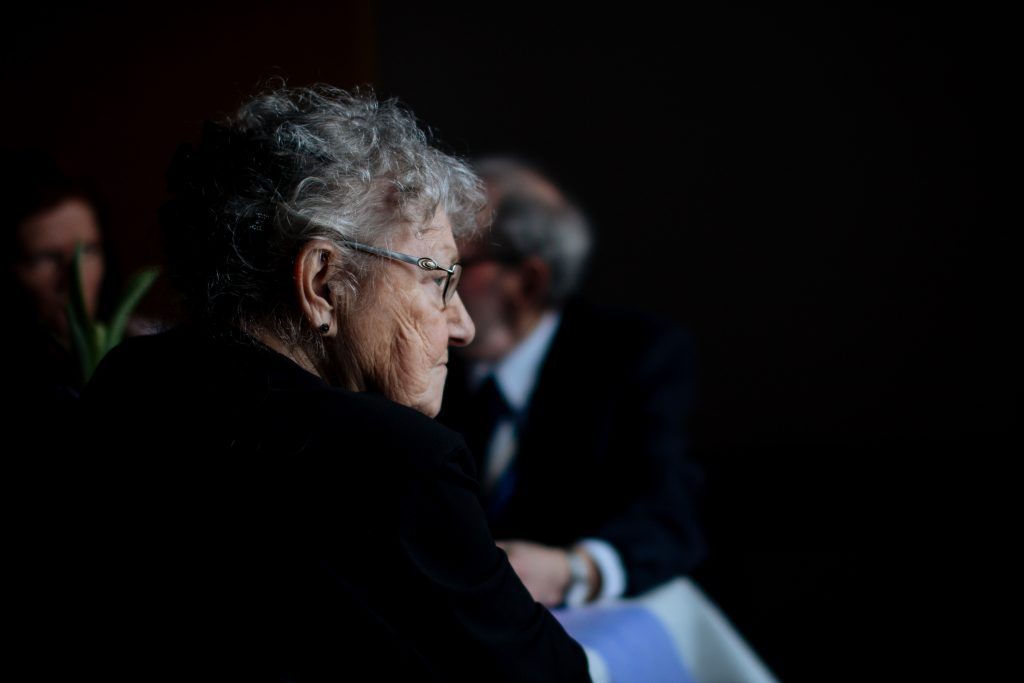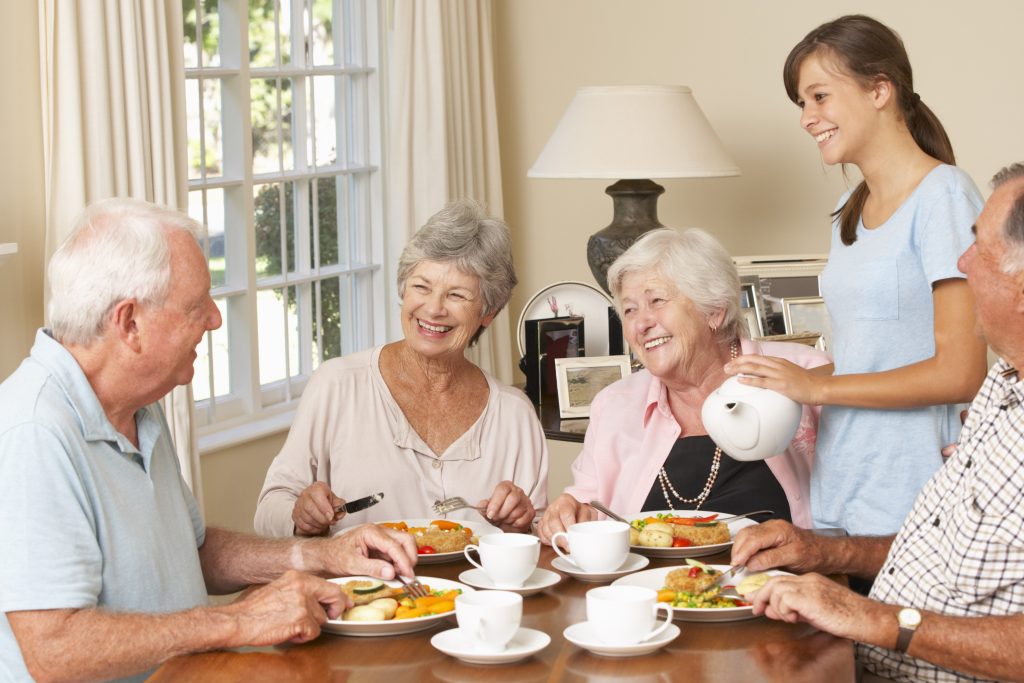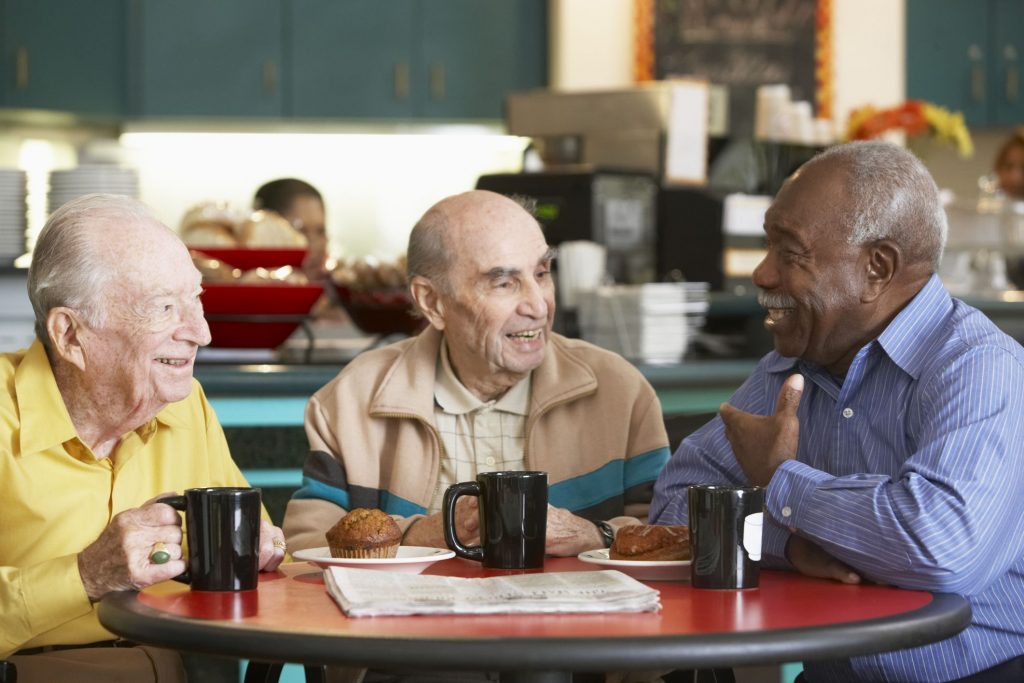
Loneliness: that feeling of being out of place, remote, abandoned, that you can easily see everywhere around you. It doesn’t take much to recognize a lonely person feeling isolated or lonely. It’s a terrible feeling, one that goes against our evolutionary nature of being social.
Many of us have experienced at least short episodes of loneliness, social isolation, or craving for more meaningful human interaction. AARP’s annual survey for older adults actually reported that 35% of adults above age 45 feel lonely, and 41% of those have suffered from loneliness for over 6 years.
However, senior people have the highest risk of social isolation and loneliness, and the risk increases with age. With the older population growing every year, loneliness is becoming a public health crisis.
Loneliness vs. social isolation
While the terms social isolation and loneliness are often used interchangeably, they are not the same. While social isolation is the physical aspect of being separated from people (i.e. living alone, not participating in social activities etc.), loneliness is the psychological distress of feeling alone and disconnected.
In short, people can feel lonely even while being among others, and living alone doesn’t necessarily result in feeling lonely.
There are also different types of loneliness. Emotional loneliness can be described as the perceived lack of deep intimate relationships, social loneliness refers to an insufficient connection to family or friends, while collective loneliness is the feeling of being out of place or excluded from your broader community.
Loneliness and social isolation can have a big impact on both physical and emotional health, and research has shown that lack of satisfying social interaction for older adults can significantly increase mortality risk.
The good news is that social isolation and loneliness can be reversed, restoring a well-balanced emotional life for the senior, and bringing various other health benefits.
What causes social isolation and loneliness?
Many times isolation can lead to loneliness, and loneliness can lead to isolation, and it’s important to take steps to break this cycle.
There are a number of factors that can cause either isolation, loneliness, or both in the elderly. For example, women have a higher risk than men. Also vulnerable are those who are retired, or have a poor financial situation.

Other causes can include:
Reduced social circle: With age, our social circle can often get gradually smaller, due to relocation, friends and family moving or passing away. This change in someone’s social circle can lead to isolation. People over 80 years old have the highest rates of social isolation, as they are also the most likely to live alone due to the loss of their spouse.
Depression: Both social isolation and feelings of loneliness can be symptoms of depression, as well as potential triggers.
Reduced mobility: Seniors with disabilities are often confined to their house, becoming socially isolated. Older adults without disabilities can also often be reluctant to go outside, fearing potential falls. For seniors living in rural areas, mobility might be further restricted by the lack of adequate transportation options.
Poor health: Various illnesses and conditions can cause elders to isolate themselves socially, either due to the constraints put on the affected person by the illness, embarrassment, or for fear of becoming a burden.
Communication difficulties: Poor eyesight, as well as hearing or cognitive decline, can lower seniors’ self-esteem. They can make communication more difficult for the person affected, causing them to think it might not be worth trying to socialize, and leading to isolation.
Being LGBT: LGBT seniors face more chances of being socially isolated and lonely for a number of reasons. They are twice as likely to live alone. They might be estranged from family members, while also having a higher chance of not being married or having children to support them. Also, they might be less likely to seek medical help or try to integrate into their community for fear of discrimination and past negative experiences.
Living alone or with one’s children:
One of the biggest risk factors for isolation and loneliness is living alone. However, a large number of seniors living with their children also feel lonely. Although surprising at first, this may be due to the nature of the relationship and social interaction between the elderly and their children.
Children caregivers might be so busy juggling their daily responsibilities that they might have little time for engaging in deep or meaningful socializing that the elderly parent would require to meet their social needs.
If we take into account a combination of these factors, some of which an entire peer group could be experiencing as well, it’s no wonder our elder citizens are feeling isolated and lonely.
Negative consequences
While it can be easy to downplay the importance of loneliness and dismiss it as a mere feeling, the truth is that it can have serious health consequences for the person affected, impacting both their physical and mental well-being.
Emotional health:
Loneliness can take an emotional toll on older people by causing increased stress, anxiety, difficulty sleeping, as well as putting them at risk for eating disorders and even suicidal thoughts.
Social isolation is also a very common trigger of depression in seniors, with even perceived isolation and loneliness being able to cause depressive symptoms. In the case of socially isolated elderly people, the symptoms of depression can be more dangerous. Depression can lead to a lack of self-care, appetite, and energy levels that can cause many health issues in the case of unmonitored, isolated seniors.

Dangers of loneliness or isolation for physical health:
The health effects from lack of meaningful social interaction in elders have been studied extensively. Studies have shown that lonely or socially isolated seniors are at an increased risk of:
- functional decline: difficulty in daily activities such as dressing, bathing, walking etc.
- developing or dying from cardiovascular disease
- speeding the onset and increasing the risk of dementia
- diabetes
- hypertension and high blood pressure
- reduced immune system
Socially isolated seniors are also more likely to develop unhealthy lifestyle behaviors regarding diet, exercise, smoking etc., that can further increase the risk for poor physical health.
In short, loneliness and social isolation can have devastating health effects for an elderly person, also accelerating their need for assistance from a caregiver or family member due to these health issues and functional decline.
Mortality: In addition, research has consistently shown a correlation between social isolation and mortality, with many scientists concluding that social isolation presents a comparable risk to that of smoking or obesity.
Loneliness is contagious: In the case of lonely adults, it seems that loneliness can ‘spread’ to their caregivers or family members. A study by the University of Chicago has found that lonely people can behave in ways that push others away, isolating themselves. Family members or caregivers of the lonely senior can start experiencing loneliness themselves and start exhibiting similar behavior patterns.
Preventing and reversing loneliness
The importance of a satisfying social life
Socialization is crucial throughout our lives. When we’re young, socializing helps form who we are as people, and it’s just as important in old age. Having a rich social life is a key aspect of maintaining a healthy mental and emotional balance, ans well as preventing and reversing loneliness and isolation.
Keeping an active social life helps seniors feel appreciated and loved. Enjoying fun or fulfilling activities with friends also contributes to feeling young at heart, energetic and having an optimistic attitude that makes life much more enjoyable.
Apart from the obvious emotional benefits, socialization also can bring important mental and physical benefits such as:
- boosting brain function
- reducing the risk and slowing the progression of dementia
- lowering disability levels and risk
- sleeping better
- better overall physical health and increased longevity
Combining social with active activities, such as going for a walk with friends, can be even more beneficial by keeping physical activity a part of your life. Physically-active social activities contribute to overall improved health and fitness, and having friends to do these with can help keep you on track.
However, for seniors with disabilities and reduced mobility, even activities such as card games or drinking tea with friends can do wonders. Friends support you through challenging life circumstances, encourage you to take care of yourself and keep you accountable.
Living in a friendly neighborhood can enhance the opportunities for socializing. Areas with good transportation options, as well as other perks for seniors such as a senior fitness center can also really improve the chances of cultivating an active social lifestyle.
For elders struggling to find friends and create a rich social life, living communities can often help reduce loneliness and eliminate social isolation. Seniors have the opportunity to meet people, make new friends, and enjoy many different organized fun and rewarding social activities.
Healthy lifestyle: older adults who lead healthy lifestyles, eating a healthy diet, avoiding alcohol and smoking, getting enough sleep, and staying physically active, are also less likely to suffer from social isolation and loneliness. A healthy lifestyle will also reduce the risk of various health conditions that may cause an elder to be more home-bound and isolated.
How to reduce loneliness and isolation
Loneliness can take a real toll on you, but the good news is that with a bit of effort, it can be prevented and reversed. As loneliness and social isolation are different issues (though they might be linked), it’s important to address the root cause of the problem.
If you’re socially isolated, it’s important to socialize even if you’re not yet feeling lonely. If social isolation is the main cause of your loneliness, building a social life should also help you feel less lonely.
For people who may be experiencing different types of loneliness without being socially isolated, it’s important to understand your feelings. Are you experiencing emotional, social, or collective loneliness? Communicating your feelings to your loved ones may make a difference. Also, the issue may not be the frequency, but the quality of your social interactions, therefore it’s a good idea to try to establish more meaningful social connections in general.
Here are several ideas that can help you with both social isolation and the feeling of being lonely. These steps and activities help with different causes of isolation or loneliness, so try different potential solutions to determine what works for you.
Join a club or group: retirement can be a beautiful and satisfying time when you have hobbies to engage in, especially when shared with friends. Think of activities that you enjoy, such as gardening, board games, arts and crafts or anything else. Whatever you can think of, there is a course, group, or club dedicated to it, where you can also connect with people and make friends. Even for reading, usually a solitary activity, you can join a book club and discuss interesting topics.
Learn something new: if you don’t have many hobbies yet, don’t worry, it’s never too late to learn something new find new activities you love. Check out some classes offered in your area, and sign up. There are also plenty of universities across the US that offer free or cheap classes for seniors. Learning something new will not only keep your mind sharp and your soul fulfilled, but it will also provide the chance to meet other people and make friends.
Cultivate gratitude: looking back at the good things in your life can help you develop a more positive mindset. Try to find things you’re grateful for and let go of past regrets. A positive outlook on life can help you make the most out of it.
Explore: whether with someone or alone, getting outside and exploring your surroundings can make you feel more connected to the rest of the world. Try visiting a nearby city, or if you want something closer, go to a park, a new store, or simply a different neighborhood.
Adopt a pet: as pet owners already know, pets enhance your quality of life and do wonders in alleviating your symptoms of loneliness. Especially when you’re feeling left out or forgotten, the unconditional love that pets give is a true blessing. A study from the University of Rochester found that seniors who live with a pet report 36% less loneliness than those living alone.
Volunteer: volunteering can help you find a renewed sense of purpose and satisfaction. Helping someone else will make you feel good about yourself, while also giving you the opportunity to connect with like-minded people and maybe make some new friends. Look out for volunteering opportunities in your community, such as assisting with events or local activities.
Physical activity: exercising is crucial for both your physical and mental health. As we age, staying active is especially important for reducing the risk of falls and maintaining our physical independence. There are many exercises suitable for seniors to choose from. Some great options for also reducing loneliness are walks with a friend, joining a senior fitness center, or going to senior fitness classes.
Community activities: getting involved in your local community fosters a great sense of connection. Meet your neighbors, look for local events, volunteer locally etc., and you will gradually increase your feeling of belonging.
Attend a place of worship: research shows that faith can help reduce loneliness. Getting involved in a religious institution and regularly attending a place of worship leads to more support from other members, which in turn can alleviate loneliness. You will meet people and get involved in a positive community that can change your emotional life for the better.
Invite people over: if you have reduced mobility, call your friends and family and invite them over regularly. Arrange a schedule such as playing cards with a friend every Monday, having tea with a different friend every Wednesday, and inviting your grand-kids over on Saturdays. This way you can establish a routine of regular social interaction.
Open up to your family: if you live with your family or see them frequently yet still feel lonely, consider opening up and telling them how you feel. Don’t worry, as mentioned earlier, these feelings can be quite common, especially if your loved ones have busy lives. Chances are, they simply haven’t realized how you feel. Expressing your feelings will help them understand your situation and start connecting with you in a deeper, more meaningful way.

Take advantage of technology:
Technology has great potential to reduce loneliness in seniors by facilitating communication.
Smartphones and tablets make it easy to keep in touch with people. In 2018, 85% of older adults were connected to the internet through their cell phones. Various applications enable you to have a quick text, phone, or video chat with your family and friends anytime, also bridging the generation gap in order to build better relationships with your grandchildren.
Social media is also great for helping you feel connected, also giving you access to groups where you can meet and connect with new people. In 2018, nearly 24% of older adults had made new friends online.
Technology is supposed to be a tool to make our lives easier, yet many seniors aren’t taking advantage of these opportunities, especially those over 75. If you’re feeling overwhelmed by technology, don’t be afraid to ask your family or friends to help you choose an easy-to-use device and teach you how to operate it.
Keep in mind that while tech can certainly be used for supplementing face-to-face interactions, it shouldn’t replace these. Regular and meaningful socialization is still the main aspect of preventing and reducing loneliness.
How to help a loved one
Loneliness is a social issue that should be addressed by everyone: governments, social institutions, the medical community etc. We all have a role to play in ensuring our elders don’t become socially isolated or lonely. We should cherish our elders, realize how much we owe them, and how much they still have to offer.
Families have a crucial role to play in preventing and reducing loneliness and social isolation for older people. In recent decades, extended family relationships (i.e. grandparents and grandchildren) have been somewhat disintegrating, especially with young people moving to different cities or countries, their busy lives preventing them from visiting frequently. This change can often cause the elderly to feel left out.
It’s often more complicated in the case of loneliness as opposed to social isolation. In this case, the focus should be more on the quality of the relationships and establishing more meaningful contact.
Here are several ways for you to start helping alleviate both loneliness and social isolation for your loved one:
Recognizing signs of potential loneliness
The first step is to look out for signs that your loved one might be feeling lonely, even when they don’t use the word. Sometimes loneliness isn’t obvious, and the person affected might not realize themselves that they suffer from it.
However, there are several signs to watch out for that could point to loneliness:
- lack of appetite
- increased spending – to make up for the lack of social activities
- sleep difficulty – loneliness has been linked to poor sleep, so ask your loved one how they are sleeping, if they are feeling tired etc.
- spending more time at home – social isolation either due to mobility or health issues, or because they aren’t sure what else to do can be a sign of loneliness
- more or fewer phone calls than usual – can either indicate the person feels the need to communicate more or that they are socially isolating themselves
Connect frequently: reduce isolation and loneliness by simply getting in touch more often. If you can, visit your loved one regularly, and spend time doing various activities that they enjoy: take them for lunch, to the theater, play a game, or ask them for stories from their youth or yours. Bring your kids or pets along, as seniors often find joy in being around children and animals. If you live farther away, simply call them more often to chat.

Be a good listener: Even if you are in regular contact, a lonely senior might be craving a deeper connection. Make them feel loved by becoming a good listener. Ask them about their daily activities, encouraging them to share anything they feel excited about. Being genuinely interested in their passions, activities, and problems will make a huge impact on their emotional well-being. You might also get some valuable wisdom!
Open up: In turn, also open up and talk about your hopes, dreams, problems, interests etc. Instead of just focusing on small talk or the practicalities of caring for them, talking about your important aspects of your life will strengthen your bond and make them feel more involved.
Get the family involved: Encourage other family members to connect with the senior in order to combat isolation and loneliness. Just a small change such as a visit or phone call can make a big difference when the effort is collective, and the senior will feel included, appreciated and connected.
Help them with daily chores: offering to help your loved one with housework or anything else they need not only gives you more time together but also makes them feel cared for. Also, ask questions to make sure they are taking their medication as prescribed and eat well.
Transportation: as transportation can be a huge obstacle for seniors in getting outside and socializing, one of the best things that you can do to help is by looking into different options that could suit them and help them understand these options. Also, if you have time, you and your family members could take turns driving them, this way you can also spend some more time together.
Holidays: lonely people, including seniors, have a harder time during holidays such as Christmas, Thanksgiving, or Easter, which are all about spending quality time with your loved ones. Help by being there for them at this time, including them in your holiday celebrations or visiting them at their living community. Get them a special gift and tell them how much you appreciate them.
Technology: as mentioned above, many seniors might be overwhelmed with technology, even though it can dramatically reduce loneliness. Help your loved one by choosing a senior-friendly device such as the GrandPad tablet which makes video-chatting, games, pictures, and music easy and intuitive.
Senior living facilities: sometimes, a senior home can be a good option for an isolated, lonely elder. While there might be an adjustment period, the positive side is that there’s no lack of opportunity for socialization. Support your loved one while adapting, and encourage them to be open to trying new activities and connect with the other seniors.
While loneliness and social isolation can affect your quality of life, they don’t have to. Taking steps can help prevent and reduce these, allowing you or your loved one to enjoy old age and have flourishing relationships with their friends and family.







